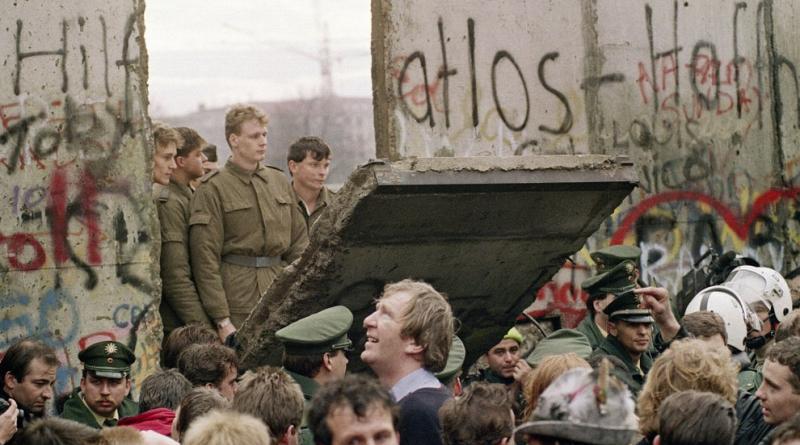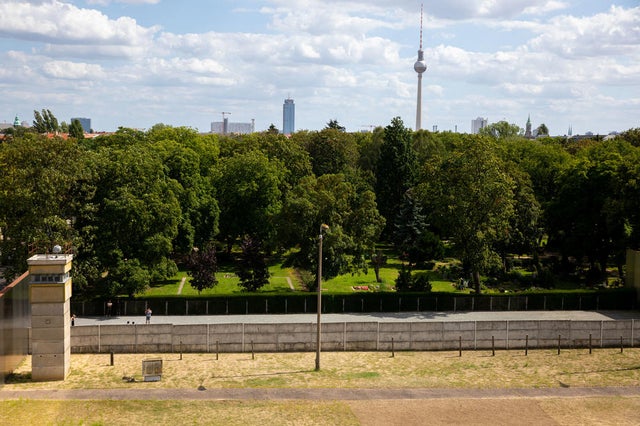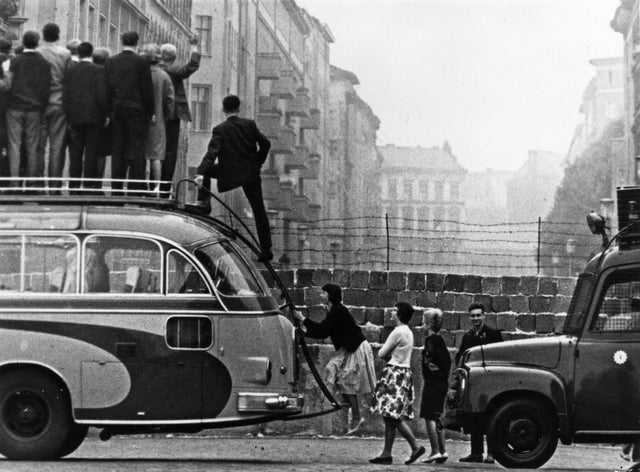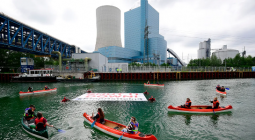How the old West-East German border will be transformed into a green oasis.

More than 30 years after the entire border zone ceased to exist, the federal government has decided the 870 mile-long scar will be designated a nature reserve, writes Christopher F. Schuetze
One used to be an East German border guard; the other grew up just west of the border and started bird-watching in the area at 13. “You might have seen me here with my big binoculars,” says Kai Frobel, the onetime twitcher, thinking back more than three decades.
“There were quite a few of those here then,” laughs Mario Wenzel, the former guard, before predicting that all too soon nobody will remember the reality of a border within Germany.
While the militarised border that split Germany for 38 years has disappeared more readily than the persistent economic and political differences between the two parts, a faint 870 mile-long scar remains.
After a long-running battle between landowners, government authorities and environmentalists, the federal government announced last month that the entire former border zone would be designated a nature reserve.
“It’s a national nature monument – similar to the Statue of Liberty,” says Frobel, an ecologist who has worked for the BUND, a German nature conservancy, since 1985. Once an insurmountable obstacle – especially to the people in the East – crossing the strip has now become a literal walk in the park.
Thirty years after the border between East and West Germany ceased to exist by the stroke of a pen on 3 October, 1990, it remains one of the most important psychological dividers in the country. The jagged line drawn by Soviet and Allied forces after the Second World War tore apart villages, families and lives, and created competing narratives of liberty and nationhood that the country is still working to overcome.
If Wenzel, the former border guard, had noticed Frobel observing birds back in the 1970s, he would not have been allowed to speak with him; East German guards were prohibited from speaking with anyone from the West. They were also forced to patrol behind a 10-foot fence and in pairs to prevent them from escaping.

Only the most trustworthy border soldiers were allowed into the buffer zone, a wild stretch of nature, usually 200 yards wide, that belonged to East Germany and set aside to give the guards time to shoot escapees.
Germans called it the death strip
The young Frobel mostly kept out of that area – where, as a West German, he would have been arrested if he strayed – and relied on his binoculars to spot birds. Through them, he discovered the death strip was teeming with life.
Farmers and foresters on both sides had been forced to leave the zone alone, allowing animals and plant life to flourish. Today, more than 5,200 different species live there, 1,200 of them so rare that they are on a list for extinction.
These days, the swaying gold of the wild grasses competes with the green of bushes and trees. On a recent visit, half a dozen yellowhammers busied themselves atop a high bush. A ditch that was part of the border defences on the eastern side is overgrown with trees, but the concrete sentry path is still visible, although fresh grass is growing out of the cracks.

Frobel raised his binoculars to watch several birds of prey sailing above. “Red Kites,” he pronounces. His childhood bedroom had a direct view of the border. “I firmly believed that this monster was built for eternity and that I would never see anything change,” he recalls. “Reunification was beyond my imagination.”
That view was widely shared
A physical border between East and West was first built in 1952, nine years before the Berlin Wall. Eventually the border included not only the death strip, but also barbed-wire fences, watch towers and a concrete ditch meant to stop vehicles. At its peak, the East deployed some 44,000 soldiers to protect its boundaries and prevent flight.
About 1,000 people died trying to flee the Communist regime, according to Robert Lebegern, the director of the German-German Museum in the small village of Modlareuth, which was once split in two by the border.

People tried crossing by ramming their cars through gates; hiding in trucks or cars; building homemade submersibles; or flying gliders or stolen crop dusters. In 1979, two families escaped in a hot-air balloon they had sewn themselves.
But almost every successful escape led to stronger security. By the 1980s, the border was so fortified that only 1 in 20 of those trying to flee made it, Lebegern says. And then it was gone. Both Frobel and Wenzel first heard of the fall of the Berlin Wall on 9 November, 1989, on television news.
The day after, Frobel and other environmentalists from the nature conservancy where he works, wrote to East German counterparts and invited them to a meeting in the Bavarian city of Hof a month later.
That meeting would lead to a coordinated campaign that three decades later led the government to last month’s commitment to protect the entire length of the border, which will be known as the Green Belt.
Environmentalists in East Germany were one of the less well-known driving forces behind the revolution that ultimately led to reunification 30 years ago. After the fall of the Berlin Wall, they also mobilised to protect much of the East’s surprisingly abundant land resources.
Because East Germany relied on heavy industry and industrial farming for economic survival, it was notoriously polluted. But the state also owned much unspoiled land, vast areas reserved for military exercises or set aside to serve as hunting grounds for the party elites.
In all, about one-tenth of the country’s land was near-pristine, says Michael Succow, a deputy minister of environment in what was the only freely elected government in East Germany, when it ran the rapidly dissolving country from April to October of 1990.
During the last legislative session, which ended with parliament voting to dissolve itself, lawmakers designated most of that land as national park or protected nature reserves. With last month’s announcement, the entire border will be safeguarded.
On a patch of wetlands between the western state of Bavaria and the eastern state of Thuringia, the former border runs down the centre of a small creek. Before reunification Frobel would come here to count the green snaketails, a rare dragonfly, and a freshwater pearl mussel
Three decades later, the creek still gurgles softly. “It is hard to believe that this peaceful place was once the frontline between Nato and the Warsaw Pact,” Frobel says.
10 October 2020
INDEPENDENT



